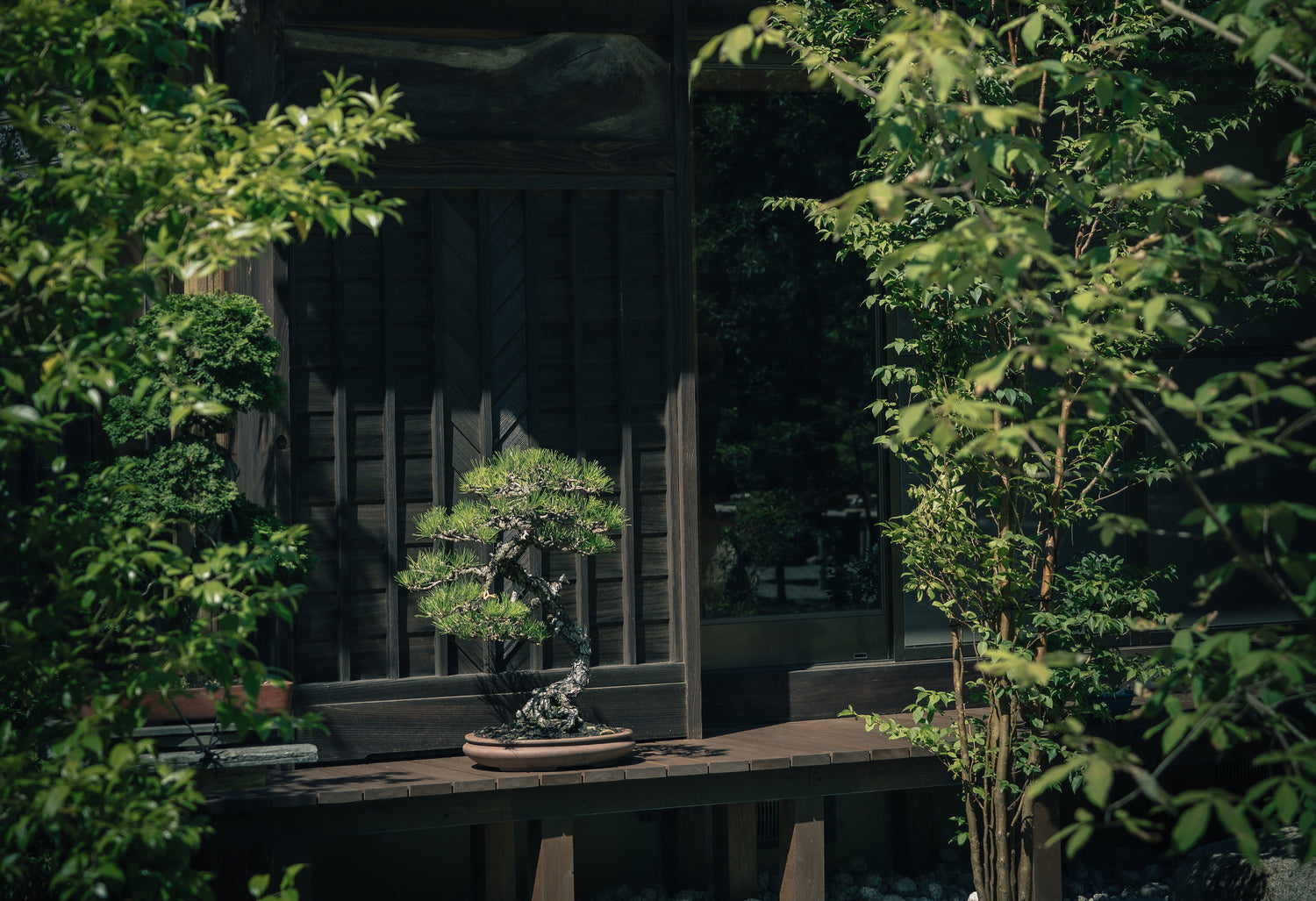Bamboo is more than just a plant—it's a symbol of strength, resilience, and versatility that has been an integral part of Japanese culture for centuries. At Tree House Bonsai, we are lucky to be surrounded by the beauty and versatility of bamboo, which has unlimited uses. In this article, we will explore the various bamboo varieties that grow in Japan, including the ones we have in our garden. We will also cover how to plant, care for, and control bamboo. How do we use bamboo in our garden, and even how to cook bamboo shoots. Let's discover the wonders of this incredible plant!
The Role of Bamboo in Japanese Gardens
Bamboo is an essential element in traditional Japanese gardens. It is often used as a focal point, creating a peaceful and serene atmosphere. In addition, bamboo can be used to create natural screens, windbreaks, and around water features.
In Japan, bamboo has also been used as a building material for centuries, thanks to its strength, flexibility, and resistance to pests and moisture. From bamboo fences to shoji screens, traditional Japanese architecture makes use of this renewable resource in a variety of creative and sustainable ways.
Bamboo Varieties in Japan
There are an estimated 250 types of bamboo that grow in Japan, each with unique characteristics. Some of the most popular varieties include moso bamboo, dwarf bamboo, and black bamboo. These varieties vary in height, diameter, and color, allowing gardeners to choose the best fit for their garden.
Of the tall varieties of bamboo at Tree House Bonsai, we have three or four: Madake, Hachiku to name two, and additionally a number of lower growing large leaf varieties.

Planting and Caring for Bamboo in Your Garden
Growing bamboo in a garden setting requires specific care and attention. Some essential tips for bamboo maintenance include:
1. Choose a suitable location
Location is key. Bamboo needs plenty of sunlight. Like any other grass, you will quickly see if it settles well in the chosen area. Bamboo either strives (too much…) or doesn’t take. No middle ground here.
2. Regular watering
Especially during the dry season, but that depends mostly on your location. Here at Tree House Bonsai, we don’t water the garden trees or grass as we have plenty of rain and moisture building up from the nearby lake.
3. Control growth and maintain the clean area
To maintain a healthy groove of bamboo it is essential to select any unnecessary shoots and chop them when they just emerge from the ground. This happens between April and June. It is a daily routine at the garden during this period. When the giant bamboo grows, it grows fast. Failing to remove the shoot early means the base will harden and be visible for a while if cut later. That is the case when removing older bamboo. We cut them at the base and leave the stump as close to the soil as possible to reduce visual impact.

4. Bamboo pruning
It is possible to prune bamboo to maintain a certain height and is mostly appropriate for smaller, thinner bamboo varieties.
3 uses of Bamboo at Tree House Bonsai
At our garden, we use bamboo in various ways, including creating fences, trellises, and garden structures. Bamboo can also be used as a useful tool when repotting bonsai trees.

1. Bamboo fences
Bamboo fencing is a sturdy and long-lasting option for outdoor use, as it can withstand harsh weather conditions and is resistant to pests and decay. Its natural appearance adds a beautiful and organic touch to any garden or backyard. Bamboo fencing can be used as a privacy screen or decorative fence and can be painted or stained to match your outdoor decor. When choosing and installing bamboo fencing, it is important to select the right type of bamboo for your needs, and install it on a solid foundation.


2. Bamboo chopsticks
When repotting, it is crucial to remove any air pockets that may have formed around the roots. A technique known as "chopsticking" involves using small bamboo sticks to gently and effectively remove these air pockets, allowing the soil to settle and providing the tree with the necessary stability for healthy growth.

3. Cooking with Bamboo Shoots
Did you know that you can use Bamboo shoots to cook delicious meals? “Takenoko'' are a traditional ingredient in Japanese cuisine and are used in a variety of dishes, including soups, stews, and salads. The roots of some bamboo varieties are used in cooking, while others are not edible. It is essential to properly prepare and cook bamboo shoots to remove any bitterness or toxins. For this, follow a recipe using Nuka (Rice Bran). Some traditional Japanese bamboo dish include:
- Takenoko gohan: a simple rice dish made with bamboo shoots
- Chikuzenni: a stew made with chicken, vegetables, and bamboo shoots
- Kamo-nanban: a hot soba noodle soup with sliced duck meat and fresh bamboo shoots

Bamboo is a versatile and sustainable material that plays a significant role in Japanese culture, and with proper care and attention, it can bring an element of peace and serenity to any garden setting. If you're interested in learning more about this unique plant or experiencing the traditional "Takenoko" bamboo shoot harvesting, we invite you to visit Tree House Bonsai and explore our garden.


